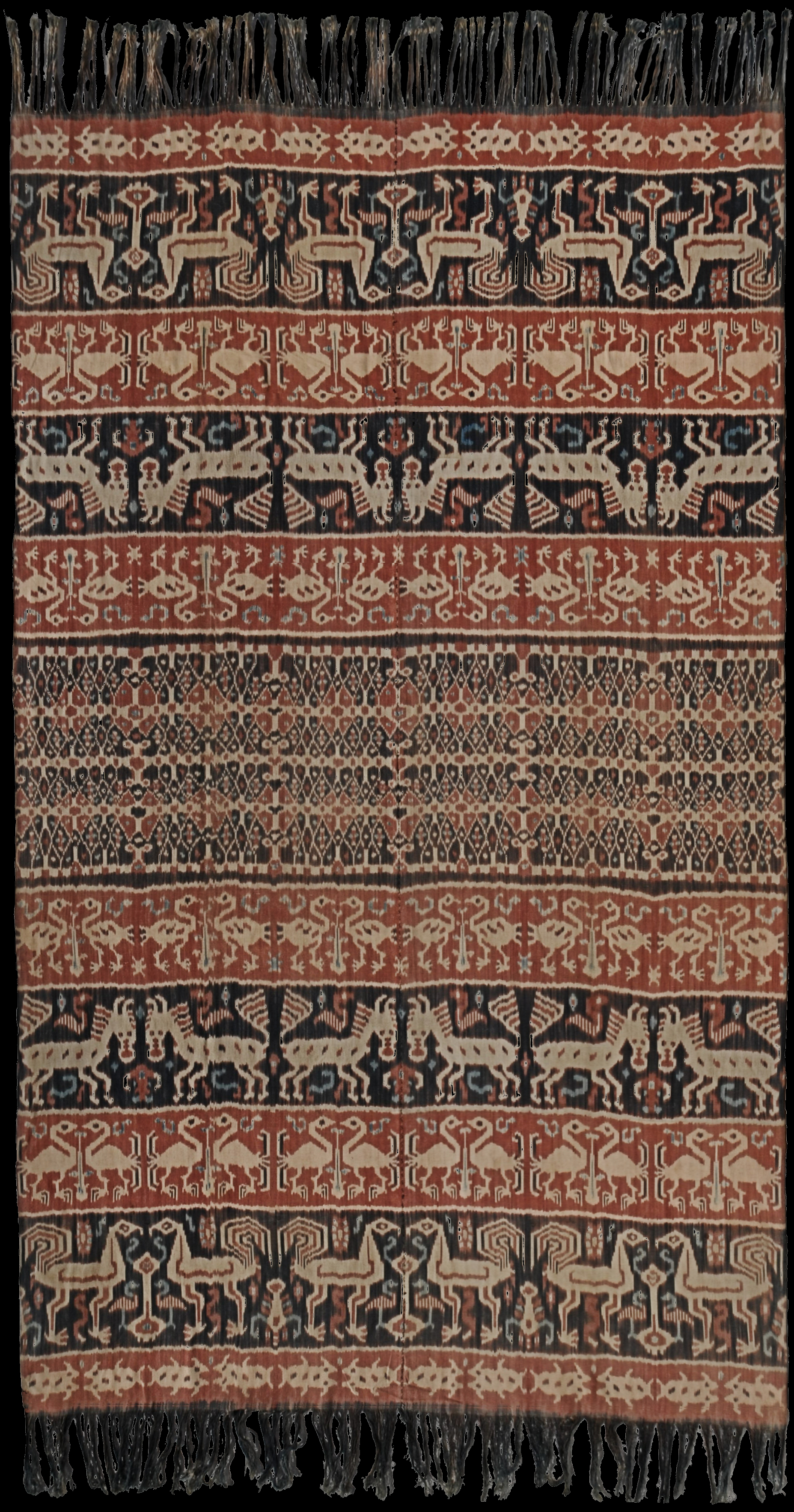| |
350 Sumba, East Sumba
Hinggi (men's blanket)
|
| Locale: | Kanatang |
| Period: | Late 19th or early 20th c. |
| Yarn: | Cotton, hand-spun, extremely fine, double-ply |
| Technique: | Warp ikat |
| Panels: | 2 |
| Size: | 150 x 245 cm (4' 11" x 8' 0") LW: 1.63 |
| Weight: | 720 g (25.4 oz), 196 g/m2 (0.64 oz/ft2) |
| Design: | Hinggi in hondu kappit construction with subtly hidden asymmetry in the centrefield and 12-fold replication in the endfields. The hai, the wide ikated bands closest to the extremities are decorated with six facing cockatoos (a Kanatang hallmark) and the next widest row with six facing horses. The midfield carries a finely drawn patola ratu pattern, reserved for the nobility. Its intricacy is ideal for hiding visual devices that break the apparent symmetry, see Noble Virtuosity, Fig. 51. Bands with unidentified fowl, probably chicken, serve as dividers. The narrow bands closest to the fringes are decorated with small fishes. |
| Comment: | This large hinggi's light weight, the result of having been made of very fine hand-spun, matches the standards of the highest courts in the estimated period of manufacture. |
| Background: | Chapters on Sumba and East Sumba. |
| Published: | Ikat from Timor and its Outer Islands, 2022.
Noble Virtuosity: Hidden Asymmetry in Ikat from Sumba, 2024. |
| Compare: | 351 |
| Sources: | The cloth's hidden asymmetry is described in Noble Virtuosity: Hidden Asymmetry in Ikat from Sumba. |
| |

©Peter ten Hoopen, 2025
All rights reserved.
|


